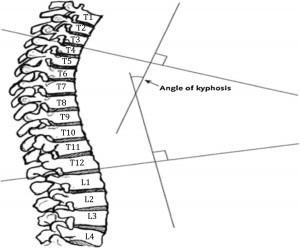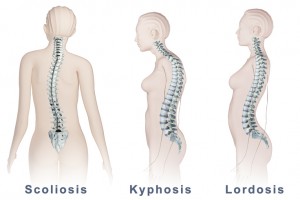This is the definition assignment, one of my best works from Unit One.
__________________________________________________________________________
Introduction:
The term Kyphosis will be defined using a parenthetical definition, a sentence definition, and an expanded definition. This assignment will provide a thorough and comprehensive understanding of the term Kyphosis for people who are unfamiliar with this word.
Parenthetical Definition:
People who have poor posture commonly have a rounded back.
Sentence Definition:
Kyphosis is a curving of the upper spine, commonly known as a hunchback. The abnormality is defined by an excessive arch resulting to an excessive curvature in the spine and the appearance of a rounded back.
Expanded Definition:
Kyphosis refers to an excessively abnormal curvature of the thoracic region of the spine.
The term “Kyphosis” is derived from the greek word “khphos,” which means “crooked,” and “-osis” which expresses a state or condition. “-Osis” in medical terminology denotes “a state of disease”.
The human spine has a natural curvature, with each curve located in the lower back, the upper back and the neck. The natural curvature of the back is meant to help with stability and shock absorption during movement and also supports the neck and head. Deformity in the spine’s curvature can lead to complications in breathing, digestive function, heart irregularities and in severe cases, shorten one’s lifespan. A spine with a Kyphotic curvature of 50 degrees or more is considered to be abnormal (Fig 1).
 (Fig. 1)
(Fig. 1)
There are different categories of Kyphosis: Postural Kyphosis, Scheuermann’s Kyphosis and Congenital Kyphosis. Postural kyphosis is the most common form and appears when people slouch. Scheuermann’s Kyphosis is a developmental condition during one’s childhood where the spine doesn’t grow as quickly as it should causing deformation. Congenital kyphosis occurs during the fetal development of the child, where the bones of the spine may not have form normally. Each form of Kyphosis are categorized based on the severity and the time of it’s development.
Kyphosis should not be confused with other spinal deformities. There are two other types of spinal deformation known as Lordosis and Scoliosis. They differ from Kyphosis by the type of curvature they produce and where they on the spine. Lordosis is excessive lower back curvature, opposite to the curve of Kyphosis, and Scoliosis is a lateral curvature which occurs down the whole spine. (Fig 2)
 (Fig 2)
(Fig 2)
References:
Fon, G.T., Pitt, M.J., & Thies, A.C.J. (1980). Thoracic kyphosis: Range in normal subjects. American Journal of Roentgenology, 134, 979-83.
Gutowski, W.T. & Renshaw, T.S. (1988). Orthotic results in adolescent kyphosis. Spine 13, 485-9.
Weiss H, Turnbull D. (2010). Kyphosis (Physical and technical rehabilitation of patients with Scheuermann’s disease and kyphosis). International Encyclopedia of Rehabilitation. Retrieved from:http://cirrie.buffalo.edu/encyclopedia/en/article/125/
Online Etymology Dictionary. (2016). Retrieved from http://www.etymonline.com/index.php?term=kyphosis
http://www.biomedcentral.com/content/figures/1471-2474-15-19-2-l.jpg (Figure 1)
http://www.knowhowmd.com/uploads/image/file/87/spinal_deformity_s_k_l.jpg (Figure 2)
